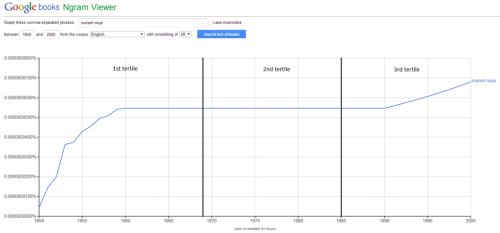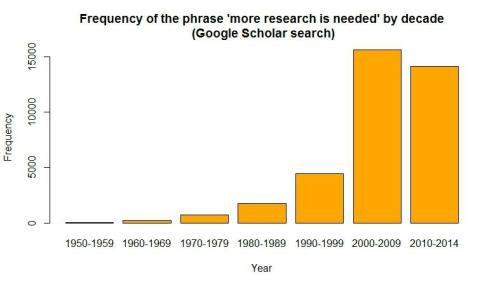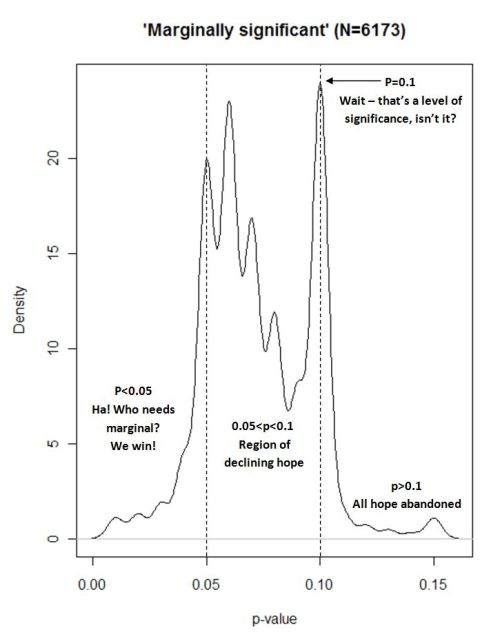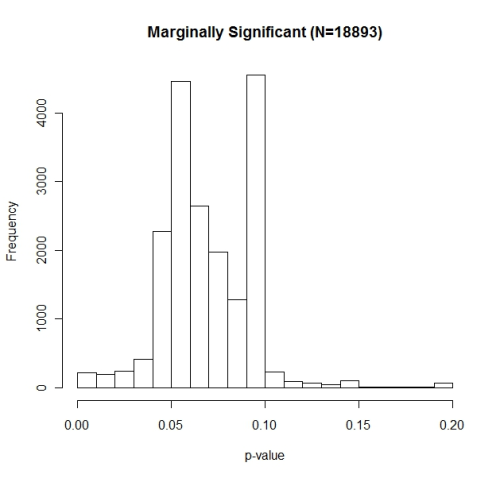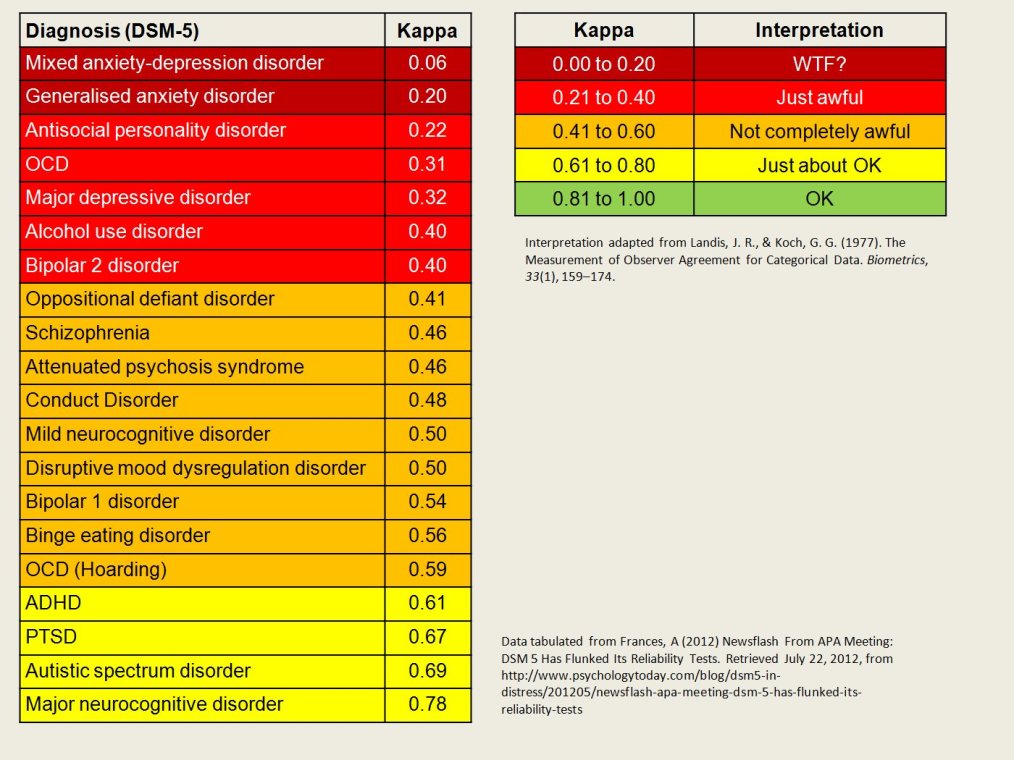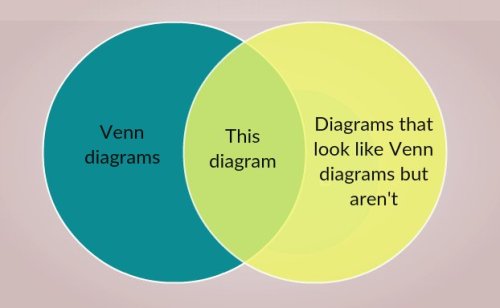
Help! My adviser won’t stop looking for my data!
Dear Alice,
Q: I’ve just joined a new lab for my second postdoc. It’s a good lab. I’m happy with my project and I got a paper in Science. My adviser is a good scientist, and he seems like a nice guy. Here’s the problem: Whenever we meet in his office, I catch him trying to look at my data. Not that this matters, but he’s a co-author on the paper.
What should I do?
—Bothered
Dear Bothered,
A: Imagine what life would be like if there were no individuals of the opposite—or preferred—ethical standards. It would be pretty dull, eh? Well, like it or not, the workplace is a part of life.
It’s true that, in principle, we’re all supposed to be honest while working. But the kind of behavior you mention is common in the workplace. Once, a friend told me that he was so distracted by an attractive set of results that he could not concentrate on the fact that he hadn’t ever seen the raw data. Your adviser may not even be aware of what he is doing.
Some definitions of ‘data harassment’ do include inappropriate looking or questioning, especially when it’s repeated to the point where the workplace becomes inhospitable. Has it reached that point? I don’t mean to suggest that repeatedly requesting to see the data is inappropriate workplace behavior—it isn’t—but it is human and up to a point, I think, forgivable. Certainly there are worse things, including citing the IRB as the reason for not inspecting the data. No one should ever use a position of authority to claim co-authorship of a paper when they can’t vouch for the data.
As long as your adviser does not move on to other inquiries, I suggest you put up with it, with good humor if you can. Just make sure that he is listening to you and your ideas, being taken in by the results you are presenting, and taking your science seriously. His attention on your data may be unwelcome, but you need his attention on your science and his reputation to shield you from further scrutiny.
—Alice
Posted in Uncategorized
PLOS ONE Update on Peer Review Process
There has been a great deal of community discussion in the last few days about a referee report that was sent to an author at PLOS ONE a few weeks ago. The report contained objectionable language, and the authors were understandably upset.
PLOS ONE has strict policies for how we expect peer review to be performed and we strive to ensure that the process is fair and civil. We have taken a number of steps to remedy the situation:
1. There should be a minimum of one male author on the first submitted draft: this will save time in the review process as the reviewer will not have to request it.
2. The term ‘Lead author’ will be replaced with ‘Alpha Male’.
3. A lady author may be designated as ‘Corresponding author’ if she provides her husband’s email address.
4. Reviewers must henceforth be addressed as ‘Mr Reviewer’.
I want to sincerely apologize for the distress the report caused the authors: we hope our new guidelines will ensure that, in future, lady authors are given a fair and unprejudiced review.
Posted in Uncategorized
Do Not Replicate (DNR) orders
What is a do not replicate order?
A do not replicate order (DNR) order is a kind of advance directive. A DNR is a request not to have your experiment replicated if your hypothesis is accepted, or if it provides support for your theory. Unless given other instructions, researchers will try to replicate any experiment with ‘positive’ results: you can use an advance directive form or tell your journal editor that you don’t want your experiment to be replicated. Your journal editor will put the DNR order in your supplementary documentation when your paper is published. Editors and journals in all states accept DNR orders.
Should I have an advance direcTive?
By creating an advance directive, you are making your preferences about your hypotheses known before you’re faced with a serious failure to replicate or refutation. This will spare your research team the stress of making decisions about the tenability of your hypotheses while you defend them with hyperbole and ad hoc reasoning. Any person 18 years of age or older can prepare an advance directive.
People who are seriously or terminally implausible are more likely to have an advance directive. For example, someone who has terminal implausibility might write that he does not want to be put on a replication program due to ceiling effects. This action can reduce his suffering, increase his peace of mind and increase his control over the literature. However, even if you are plausible, you might want to consider writing an advance directive. An accident or serious failure to replicate can happen suddenly, and if you already have a signed advance directive, your wishes are more likely to be followed.
How can I write an advance directive?
You can write an advance directive in several ways:
- Use a form provided by your editor
- Write your wishes down by yourself
- Call a lawyer
Advance directives and DNRs do not have to be complicated legal documents. They can be short, simple statements about what you want done or not done if you can’t influence or control the replication yourself. Remember, anything you write by yourself or with a computer software package should follow your state laws. You may also want to have what you have written reviewed by your editor or a lawyer to make sure your directives are understood exactly as you intended. When you are satisfied with your directives, the orders should be notarized if possible, and copies should be given to your research team and your editor.
Can I change my advance directive?
If you suddenly remember the scientific method, or even if you just get over yourself, you may change or cancel your advance directive at any time, as long as you are considered of sound mind to do so. Being of sound mind means that you are still able to think rationally and communicate your wishes in a clear manner, which is ironically what people generally expect scientists to do. Again, your changes must be made, signed and notarized according to the laws in your state. Make sure that your editor and any research team members who knew about your directives are also aware that you have changed them.
If you do not have time to put your changes in writing, you can make them known. Tell your editor and any members of the research team present exactly what you want to happen. Usually, wishes that are made in person will be followed in place of the ones made earlier in writing. Be sure your instructions are clearly understood by everyone you have told.
DNR Template
DO NOT REPLICATE ORDER
I have discussed my paper with my editor _______________________.
I request that in the event of my hypotheses being accepted, no person shall attempt to replicate my study.
This order is in effect until it is revoked by me.
Being of sound mind & of a superficially scientific disposition, I voluntarily execute this order, and I understand its full import.
___________________________
(Declarant’s signature)
______________________
(Date)
__________________________________
(Type or print declarant’s full name)
____________________________
(Editor’s signature)
_____________________
(Date)
__________________________________
(Type or print editor’s full name)
ATTESTATION OF WITNESSES
The individual who has executed this order appears to be of sound mind, and under no duress, fraud, or undue influence, save that of misunderstanding the processes by which scientific knowledge is advanced.
______________________________
(Witness signature)
__________________
(Date)
_________________________________
(Type or print witness’s full name)
This form was prepared pursuant to, and in compliance with, the “Harvard do-not-replicate procedure act”.
Downloadable form in Word format here
Posted in Uncategorized
Marginally Significant
I Tweeted this graph last week. I had been messing around with density plots in R and it seemed a neat illustration of the phrase ‘marginally significant’ being used to mean ‘nearly, but not actually, significant’: the frequency of the phrase is rare below 0.05, peaks at p=0.06, then declines sharply before another peak at p=0.1.
The ensuing discussion highlighted a couple of good points: (a) where did the data come from? and (b) it should have been a histogram.
Where did the data come from? A very cursory search of Google Scholar for the phrase “marginally significant (p=x), where x is 0.01, 0.02..0.15 in steps of 0.01, which is probably good enough for a quick Tweet, but not enough for sustained discussion.
Should it have been a histogram? Yes, if only because the peaks misrepresent the data: there are no intermediate values between, say, 0.05 and 0.06.
So I re-did the Google Scholar search. This time I looked for statements of the form “marginally significant (p=x)” where x is every synonym of 0.001,0.002..0.200 in steps of 0.001. So, for example, p=0.01 might be in the format 0.01, 0.010, .01, .010.
Here are the data:
And here is the histogram:
It’s still not perfect, since the search misses examples if the p-value isn’t cited directly after the phrase. But until automated searches on Google Scholar are possible, it’s probably the best I can do for now.
Posted in Uncategorized
Still Not Significant
What to do if your p-value is just over the arbitrary threshold for ‘significance’ of p=0.05?
You don’t need to play the significance testing game – there are better methods, like quoting the effect size with a confidence interval – but if you do, the rules are simple: the result is either significant or it isn’t.
So if your p-value remains stubbornly higher than 0.05, you should call it ‘non-significant’ and write it up as such. The problem for many authors is that this just isn’t the answer they were looking for: publishing so-called ‘negative results’ is harder than ‘positive results’.
The solution is to apply the time-honoured tactic of circumlocution to disguise the non-significant result as something more interesting. The following list is culled from peer-reviewed journal articles in which (a) the authors set themselves the threshold of 0.05 for significance, (b) failed to achieve that threshold value for p and (c) described it in such a way as to make it seem more interesting.
As well as being statistically flawed (results are either significant or not and can’t be qualified), the wording is linguistically interesting, often describing an aspect of the result that just doesn’t exist. For example, “a trend towards significance” expresses non-significance as some sort of motion towards significance, which it isn’t: there is no ‘trend’, in any direction, and nowhere for the trend to be ‘towards’.
Some further analysis will follow, but for now here is the list in full (UPDATE: now in alpha-order):
(barely) not statistically significant (p=0.052)
a barely detectable statistically significant difference (p=0.073)
a borderline significant trend (p=0.09)
a certain trend toward significance (p=0.08)
a clear tendency to significance (p=0.052)
a clear trend (p<0.09)
a clear, strong trend (p=0.09)
a considerable trend toward significance (p=0.069)
a decreasing trend (p=0.09)
a definite trend (p=0.08)
a distinct trend toward significance (p=0.07)
a favorable trend (p=0.09)
a favourable statistical trend (p=0.09)
a little significant (p<0.1)
a margin at the edge of significance (p=0.0608)
a marginal trend (p=0.09)
a marginal trend toward significance (p=0.052)
a marked trend (p=0.07)
a mild trend (p<0.09)
a moderate trend toward significance (p=0.068)
a near-significant trend (p=0.07)
a negative trend (p=0.09)
a nonsignificant trend (p<0.1)
a nonsignificant trend toward significance (p=0.1)
a notable trend (p<0.1)
a numerical increasing trend (p=0.09)
a numerical trend (p=0.09)
a positive trend (p=0.09)
a possible trend (p=0.09)
a possible trend toward significance (p=0.052)
a pronounced trend (p=0.09)
a reliable trend (p=0.058)
a robust trend toward significance (p=0.0503)
a significant trend (p=0.09)
a slight slide towards significance (p<0.20)
a slight tendency toward significance(p<0.08)
a slight trend (p<0.09)
a slight trend toward significance (p=0.098)
a slightly increasing trend (p=0.09)
a small trend (p=0.09)
a statistical trend (p=0.09)
a statistical trend toward significance (p=0.09)
a strong tendency towards statistical significance (p=0.051)
a strong trend (p=0.077)
a strong trend toward significance (p=0.08)
a substantial trend toward significance (p=0.068)
a suggestive trend (p=0.06)
a trend close to significance (p=0.08)
a trend significance level (p=0.08)
a trend that approached significance (p<0.06)
a very slight trend toward significance (p=0.20)
a weak trend (p=0.09)
a weak trend toward significance (p=0.12)
a worrying trend (p=0.07)
all but significant (p=0.055)
almost achieved significance (p=0-065)
almost approached significance (p=0.065)
almost attained significance (p<0.06)
almost became significant (p=0.06)
almost but not quite significant (p=0.06)
almost clinically significant (p<0.10)
almost insignificant (p>0.065)
almost marginally significant (p>0.05)
almost non-significant (p=0.083)
almost reached statistical significance (p=0.06)
almost significant (p=0.06)
almost significant tendency (p=0.06)
almost statistically significant (p=0.06)
an adverse trend (p=0.10)
an apparent trend (p=0.286)
an associative trend (p=0.09)
an elevated trend (p<0.05)
an encouraging trend (p<0.1)
an established trend (p<0.10)
an evident trend (p=0.13)
an expected trend (p=0.08)
an important trend (p=0.066)
an increasing trend (p<0.09)
an interesting trend (p=0.1)
an inverse trend toward significance (p=0.06)
an observed trend (p=0.06)
an obvious trend (p=0.06)
an overall trend (p=0.2)
an unexpected trend (p=0.09)
an unexplained trend (p=0.09)
an unfavorable trend (p<0.10)
appeared to be marginally significant (p<0.10)
approached acceptable levels of statistical significance (p=0.054)
approached but did not quite achieve significance (p>0.05)
approached but fell short of significance (p=0.07)
approached conventional levels of significance (p<0.10)
approached near significance (p=0.06)
approached our criterion of significance (p>0.08)
approached significant (p=0.11)
approached the borderline of significance (p=0.07)
approached the level of significance (p=0.09)
approached trend levels of significance (p0.05)
approached, but did reach, significance (p=0.065)
approaches but fails to achieve a customary level of statistical significance (p=0.154)
approaches statistical significance (p>0.06)
approaching a level of significance (p=0.089)
approaching an acceptable significance level (p=0.056)
approaching borderline significance (p=0.08)
approaching borderline statistical significance (p=0.07)
approaching but not reaching significance (p=0.53)
approaching clinical significance (p=0.07)
approaching close to significance (p<0.1)
approaching conventional significance levels (p=0.06)
approaching conventional statistical significance (p=0.06)
approaching formal significance (p=0.1052)
approaching independent prognostic significance (p=0.08)
approaching marginal levels of significance p<0.107)
approaching marginal significance (p=0.064)
approaching more closely significance (p=0.06)
approaching our preset significance level (p=0.076)
approaching prognostic significance (p=0.052)
approaching significance (p=0.09)
approaching the traditional significance level (p=0.06)
approaching to statistical significance (p=0.075)
approaching, although not reaching, significance (p=0.08)
approaching, but not reaching, significance (p<0.09)
approximately significant (p=0.053)
approximating significance (p=0.09)
arguably significant (p=0.07)
as good as significant (p=0.0502)
at the brink of significance (p=0.06)
at the cusp of significance (p=0.06)
at the edge of significance (p=0.055)
at the limit of significance (p=0.054)
at the limits of significance (p=0.053)
at the margin of significance (p=0.056)
at the margin of statistical significance (p<0.07)
at the verge of significance (p=0.058)
at the very edge of significance (p=0.053)
barely below the level of significance (p=0.06)
barely escaped statistical significance (p=0.07)
barely escapes being statistically significant at the 5% risk level (0.1>p>0.05)
barely failed to attain statistical significance (p=0.067)
barely fails to attain statistical significance at conventional levels (p<0.10
barely insignificant (p=0.075)
barely missed statistical significance (p=0.051)
barely missed the commonly acceptable significance level (p<0.053)
barely outside the range of significance (p=0.06)
barely significant (p=0.07)
below (but verging on) the statistical significant level (p>0.05)
better trends of improvement (p=0.056)
bordered on a statistically significant value (p=0.06)
bordered on being significant (p>0.07)
bordered on being statistically significant (p=0.0502)
bordered on but was not less than the accepted level of significance (p>0.05)
bordered on significant (p=0.09)
borderline conventional significance (p=0.051)
borderline level of statistical significance (p=0.053)
borderline significant (p=0.09)
borderline significant trends (p=0.099)
close to a marginally significant level (p=0.06)
close to being significant (p=0.06)
close to being statistically significant (p=0.055)
close to borderline significance (p=0.072)
close to the boundary of significance (p=0.06)
close to the level of significance (p=0.07)
close to the limit of significance (p=0.17)
close to the margin of significance (p=0.055)
close to the margin of statistical significance (p=0.075)
closely approaches the brink of significance (p=0.07)
closely approaches the statistical significance (p=0.0669)
closely approximating significance (p>0.05)
closely not significant (p=0.06)
closely significant (p=0.058)
close-to-significant (p=0.09)
did not achieve conventional threshold levels of statistical significance (p=0.08)
did not exceed the conventional level of statistical significance (p<0.08)
did not quite achieve acceptable levels of statistical significance (p=0.054)
did not quite achieve significance (p=0.076)
did not quite achieve the conventional levels of significance (p=0.052)
did not quite achieve the threshold for statistical significance (p=0.08)
did not quite attain conventional levels of significance (p=0.07)
did not quite reach a statistically significant level (p=0.108)
did not quite reach conventional levels of statistical significance (p=0.079)
did not quite reach statistical significance (p=0.063)
did not reach the traditional level of significance (p=0.10)
did not reach the usually accepted level of clinical significance (p=0.07)
difference was apparent (p=0.07)
direction heading towards significance (p=0.10)
does not appear to be sufficiently significant (p>0.05)
does not narrowly reach statistical significance (p=0.06)
does not reach the conventional significance level (p=0.098)
effectively significant (p=0.051)
equivocal significance (p=0.06)
essentially significant (p=0.10)
extremely close to significance (p=0.07)
failed to reach significance on this occasion (p=0.09)
failed to reach statistical significance (p=0.06)
fairly close to significance (p=0.065)
fairly significant (p=0.09)
falls just short of standard levels of statistical significance (p=0.06)
fell (just) short of significance (p=0.08)
fell barely short of significance (p=0.08)
fell just short of significance (p=0.07)
fell just short of statistical significance (p=0.12)
fell just short of the traditional definition of statistical significance (p=0.051)
fell marginally short of significance (p=0.07)
fell narrowly short of significance (p=0.0623)
fell only marginally short of significance (p=0.0879)
fell only short of significance (p=0.06)
fell short of significance (p=0.07)
fell slightly short of significance (p>0.0167)
fell somewhat short of significance (p=0.138)
felt short of significance (p=0.07)
flirting with conventional levels of significance (p>0.1)
heading towards significance (p=0.086)
highly significant (p=0.09)
hint of significance (p>0.05)
hovered around significance (p = 0.061)
hovered at nearly a significant level (p=0.058)
hovering closer to statistical significance (p=0.076)
hovers on the brink of significance (p=0.055)
in the edge of significance (p=0.059)
in the verge of significance (p=0.06)
inconclusively significant (p=0.070)
indeterminate significance (p=0.08)
indicative significance (p=0.08)
is just outside the conventional levels of significance
just about significant (p=0.051)
just above the arbitrary level of significance (p=0.07)
just above the margin of significance (p=0.053)
just at the conventional level of significance (p=0.05001)
just barely below the level of significance (p=0.06)
just barely failed to reach significance (p<0.06)
just barely insignificant (p=0.11)
just barely statistically significant (p=0.054)
just beyond significance (p=0.06)
just borderline significant (p=0.058)
just escaped significance (p=0.07)
just failed significance (p=0.057)
just failed to be significant (p=0.072)
just failed to reach statistical significance (p=0.06)
just failing to reach statistical significance (p=0.06)
just fails to reach conventional levels of statistical significance (p=0.07)
just lacked significance (p=0.053)
just marginally significant (p=0.0562)
just missed being statistically significant (p=0.06)
just missing significance (p=0.07)
just on the verge of significance (p=0.06)
just outside accepted levels of significance (p=0.06)
just outside levels of significance (p<0.08)
just outside the bounds of significance (p=0.06)
just outside the conventional levels of significance (p=0.1076)
just outside the level of significance (p=0.0683)
just outside the limits of significance (p=0.06)
just outside the traditional bounds of significance (p=0.06)
just over the limits of statistical significance (p=0.06)
just short of significance (p=0.07)
just shy of significance (p=0.053)
just skirting the boundary of significance (p=0.052)
just tendentially significant (p=0.056)
just tottering on the brink of significance at the 0.05 level
just very slightly missed the significance level (p=0.086)
leaning towards significance (p=0.15)
leaning towards statistical significance (p=0.06)
likely to be significant (p=0.054)
loosely significant (p=0.10)
marginal significance (p=0.07)
marginally and negatively significant (p=0.08)
marginally insignificant (p=0.08)
marginally nonsignificant (p=0.096)
marginally outside the level of significance
marginally significant (p>=0.1)
marginally significant tendency (p=0.08)
marginally statistically significant (p=0.08)
may not be significant (p=0.06)
medium level of significance (p=0.051)
mildly significant (p=0.07)
missed narrowly statistical significance (p=0.054)
moderately significant (p>0.11)
modestly significant (p=0.09)
narrowly avoided significance (p=0.052)
narrowly eluded statistical significance (p=0.0789)
narrowly escaped significance (p=0.08)
narrowly evaded statistical significance (p>0.05)
narrowly failed significance (p=0.054)
narrowly missed achieving significance (p=0.055)
narrowly missed overall significance (p=0.06)
narrowly missed significance (p=0.051)
narrowly missed standard significance levels (p<0.07)
narrowly missed the significance level (p=0.07)
narrowly missing conventional significance (p=0.054)
near limit significance (p=0.073)
near miss of statistical significance (p>0.1)
near nominal significance (p=0.064)
near significance (p=0.07)
near to statistical significance (p=0.056)
near/possible significance(p=0.0661)
near-borderline significance (p=0.10)
near-certain significance (p=0.07)
nearing significance (p<0.051)
nearly acceptable level of significance (p=0.06)
nearly approaches statistical significance (p=0.079)
nearly borderline significance (p=0.052)
nearly negatively significant (p<0.1)
nearly positively significant (p=0.063)
nearly reached a significant level (p=0.07)
nearly reaching the level of significance (p<0.06)
nearly significant (p=0.06)
nearly significant tendency (p=0.06)
nearly, but not quite significant (p>0.06)
near-marginal significance (p=0.18)
near-significant (p=0.09)
near-to-significance (p=0.093)
near-trend significance (p=0.11)
nominally significant (p=0.08)
non-insignificant result (p=0.500)
non-significant in the statistical sense (p>0.05
not absolutely significant but very probably so (p>0.05)
not as significant (p=0.06)
not clearly significant (p=0.08)
not completely significant (p=0.07)
not completely statistically significant (p=0.0811)
not conventionally significant (p=0.089), but..
not currently significant (p=0.06)
not decisively significant (p=0.106)
not entirely significant (p=0.10)
not especially significant (p>0.05)
not exactly significant (p=0.052)
not extremely significant (p<0.06)
not formally significant (p=0.06)
not fully significant (p=0.085)
not globally significant (p=0.11)
not highly significant (p=0.089)
not insignificant (p=0.056)
not markedly significant (p=0.06)
not moderately significant (P>0.20)
not non-significant (p>0.1)
not numerically significant (p>0.05)
not obviously significant (p>0.3)
not overly significant (p>0.08)
not quite borderline significance (p>=0.089)
not quite reach the level of significance (p=0.07)
not quite significant (p=0.118)
not quite within the conventional bounds of statistical significance (p=0.12)
not reliably significant (p=0.091)
not remarkably significant (p=0.236)
not significant by common standards (p=0.099)
not significant by conventional standards (p=0.10)
not significant by traditional standards (p<0.1)
not significant in the formal statistical sense (p=0.08)
not significant in the narrow sense of the word (p=0.29)
not significant in the normally accepted statistical sense (p=0.064)
not significantly significant but..clinically meaningful (p=0.072)
not statistically quite significant (p<0.06)
not strictly significant (p=0.06)
not strictly speaking significant (p=0.057)
not technically significant (p=0.06)
not that significant (p=0.08)
not to an extent that was fully statistically significant (p=0.06)
not too distant from statistical significance at the 10% level
not too far from significant at the 10% level
not totally significant (p=0.09)
not unequivocally significant (p=0.055)
not very definitely significant (p=0.08)
not very definitely significant from the statistical point of view (p=0.08)
not very far from significance (p<0.092)
not very significant (p=0.1)
not very statistically significant (p=0.10)
not wholly significant (p>0.1)
not yet significant (p=0.09)
not strongly significant (p=0.08)
noticeably significant (p=0.055)
on the border of significance (p=0.063)
on the borderline of significance (p=0.0699)
on the borderlines of significance (p=0.08)
on the boundaries of significance (p=0.056)
on the boundary of significance (p=0.055)
on the brink of significance (p=0.052)
on the cusp of conventional statistical significance (p=0.054)
on the cusp of significance (p=0.058)
on the edge of significance (p>0.08)
on the limit to significant (p=0.06)
on the margin of significance (p=0.051)
on the threshold of significance (p=0.059)
on the verge of significance (p=0.053)
on the very borderline of significance (0.05<p<0.06)
on the very fringes of significance (p=0.099)
on the very limits of significance (0.1>p>0.05)
only a little short of significance (p>0.05)
only just failed to meet statistical significance (p=0.051)
only just insignificant (p>0.10)
only just missed significance at the 5% level
only marginally fails to be significant at the 95% level (p=0.06)
only marginally nearly insignificant (p=0.059)
only marginally significant (p=0.9)
only slightly less than significant (p=0.08)
only slightly missed the conventional threshold of significance (p=0.062)
only slightly missed the level of significance (p=0.058)
only slightly missed the significance level (p=0·0556)
only slightly non-significant (p=0.0738)
only slightly significant (p=0.08)
partial significance (p>0.09)
partially significant (p=0.08)
partly significant (p=0.08)
perceivable statistical significance (p=0.0501)
possible significance (p<0.098)
possibly marginally significant (p=0.116)
possibly significant (0.05<p>0.10)
possibly statistically significant (p=0.10)
potentially significant (p>0.1)
practically significant (p=0.06)
probably not experimentally significant (p=0.2)
probably not significant (p>0.25)
probably not statistically significant (p=0.14)
probably significant (p=0.06)
provisionally significant (p=0.073)
quasi-significant (p=0.09)
questionably significant (p=0.13)
quite close to significance at the 10% level (p=0.104)
quite significant (p=0.07)
rather marginal significance (p>0.10)
reached borderline significance (p=0.0509)
reached near significance (p=0.07)
reasonably significant (p=0.07)
remarkably close to significance (p=0.05009)
resides on the edge of significance (p=0.10)
roughly significant (p>0.1)
scarcely significant (0.05<p>0.1)
significant at the .07 level
significant tendency (p=0.09)
significant to some degree (0<p>1)
significant, or close to significant effects (p=0.08, p=0.05)
significantly better overall (p=0.051)
significantly significant (p=0.065)
similar but not nonsignificant trends (p>0.05)
slight evidence of significance (0.1>p>0.05)
slight non-significance (p=0.06)
slight significance (p=0.128)
slight tendency toward significance (p=0.086)
slightly above the level of significance (p=0.06)
slightly below the level of significance (p=0.068)
slightly exceeded significance level (p=0.06)
slightly failed to reach statistical significance (p=0.061)
slightly insignificant (p=0.07)
slightly less than needed for significance (p=0.08)
slightly marginally significant (p=0.06)
slightly missed being of statistical significance (p=0.08)
slightly missed statistical significance (p=0.059)
slightly missed the conventional level of significance (p=0.061)
slightly missed the level of statistical significance (p<0.10)
slightly missed the margin of significance (p=0.051)
slightly not significant (p=0.06)
slightly outside conventional statistical significance (p=0.051)
slightly outside the margins of significance (p=0.08)
slightly outside the range of significance (p=0.09)
slightly outside the significance level (p=0.077)
slightly outside the statistical significance level (p=0.053)
slightly significant (p=0.09)
somewhat marginally significant (p>0.055)
somewhat short of significance (p=0.07)
somewhat significant (p=0.23)
somewhat statistically significant (p=0.092)
strong trend toward significance (p=0.08)
sufficiently close to significance (p=0.07)
suggestive but not quite significant (p=0.061)
suggestive of a significant trend (p=0.08)
suggestive of statistical significance (p=0.06)
suggestively significant (p=0.064)
tailed to insignificance (p=0.1)
tantalisingly close to significance (p=0.104)
technically not significant (p=0.06)
teetering on the brink of significance (p=0.06)
tend to significant (p>0.1)
tended to approach significance (p=0.09)
tended to be significant (p=0.06)
tended toward significance (p=0.13)
tendency toward significance (p approaching 0.1)
tendency toward statistical significance (p=0.07)
tends to approach significance (p=0.12)
tentatively significant (p=0.107)
too far from significance (p=0.12)
trend bordering on statistical significance (p=0.066)
trend in a significant direction (p=0.09)
trend in the direction of significance (p=0.089)
trend significance level (p=0.06)
trend toward (p>0.07)
trending towards significance (p>0.15)
trending towards significant (p=0.099)
uncertain significance (p>0.07)
vaguely significant (p>0.2)
verged on being significant (p=0.11)
verging on significance (p=0.056)
verging on the statistically significant (p<0.1)
verging-on-significant (p=0.06)
very close to approaching significance (p=0.060)
very close to significant (p=0.11)
very close to the conventional level of significance (p=0.055)
very close to the cut-off for significance (p=0.07)
very close to the established statistical significance level of p=0.05 (p=0.065)
very close to the threshold of significance (p=0.07)
very closely approaches the conventional significance level (p=0.055)
very closely brushed the limit of statistical significance (p=0.051)
very narrowly missed significance (p<0.06)
very nearly significant (p=0.0656)
very slightly non-significant (p=0.10)
very slightly significant (p<0.1)
virtually significant (p=0.059)
weak significance (p>0.10)
weakened..significance (p=0.06)
weakly non-significant (p=0.07)
weakly significant (p=0.11)
weakly statistically significant (p=0.0557)
well-nigh significant (p=0.11)
Posted in Uncategorized


